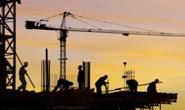Steel Markets

Construction Spending in July Highest Since 2008
Written by Sandy Williams
September 2, 2014
The following is a press release by the Associated General Contractors of America:
ACG, Sept 2, 2014 — Growing demand for construction services comes as new study finds one-in-four construction firms turning down work because of growing labor shortages for the industry.
All major categories of construction spending increased in July and total construction reached the highest level since December 2008, according to an analysis by the Associated General Contractors of America. Association officials welcomed the robust spending figures, but cautioned that growing demand will put new pressure on an already tight labor market.
“It is encouraging to see signs of a broad-based recovery in private construction along with a recovery – at least for now – in public construction investment,” said Ken Simonson, the association’s chief economist. “Private nonresidential construction should remain strong through the rest of 2014 and beyond, while residential spending is likely to keep growing, though at a more moderate pace. However, funding is still inadequate for needed public infrastructure improvements.”
Construction spending in July totaled $981 billion at a seasonally adjusted annual rate, up 1.8 percent from the June total, which was revised substantially higher than the initial estimate, Simonson noted. The July total was 8.2 percent higher than in July 2013. Private nonresidential spending increased 2.1 percent from June and 14 percent from a year earlier, while private residential spending grew 0.7 percent for the month and 8.0 percent year-over-year.
Public construction spending rose 3.0 percent from June to July and 2.1 percent year-over-year; nevertheless, public construction for the first seven months of 2014 combined remained 0.1 percent below the total for the same period in 2013. “The largest private nonresidential categories showed robust year-over-year growth, as did both single- and multifamily housing,” Simonson commented. “The dominant public segments – highway and educational construction – also did well in July, though their performance has been mixed year-to-date.”
The largest private nonresidential type, power construction -which includes oil and gas fields and pipelines as well as electric power – soared 7.5 percent in July and 29 percent from a year earlier, Simonson noted. Manufacturing construction jumped 4.4 percent and 25 percent, respectively. Single-family home construction gained 0.5 percent and 9.4 percent, while multifamily spending rose 0.2 percent and 41 percent. Highway and street construction was up 6.9 percent for the month, 3.0 percent year-over-year and 3.1 percent for the first seven months combined. Public educational construction climbed 1.6 percent from June and 0.6 percent from July 2013 but declined 1.5 percent year-to-date.
Association officials said the spending figures were welcome news for the industry, but cautioned that worker shortages are likely to get more severe as demand continues to expand. They noted that a survey the association conducted with SmartBrief found that 25 percent of responding firms report they have already turned down projects because of labor shortages while two-thirds say they are having a hard time finding workers.
“As demand for construction rebounds, many firms are finding that the pool of available workers is pretty shallow,” said Stephen E. Sandherr, the association’s chief executive officer. “Retiring older workers, strong demand in other sectors of the economy and few younger people seeking careers in construction are combining to create workforce shortages for many construction firms.”

Sandy Williams
Read more from Sandy WilliamsLatest in Steel Markets

CMC looks beyond Arizona micro-mill woes to long-term viability of construction mart
Despite the economic and geopolitical upheaval of the last five years, CMC President and CEO Peter Matt points out that the construction market has been an essential element of the way forward.

US importers face stricter rules under revamped S232 tariffs
“CBP expects full compliance from the trade community for accurate reporting and payment of the additional duties. CBP will take enforcement action on non-compliance," the agency said in a March 7 bulletin.

Steel exports rebound in January
US steel exports recovered to a five-month high in January after having fallen to a two-year low in December. This growth follows four consecutive months of declining exports.

Construction spending drops marginally in January
Construction spending edged down slightly in January, slipping for the first time in four months. The US Census Bureau estimated spending at a seasonally adjusted annual rate of $2,196 billion in January, down 0.2% from December’s downward revised rate. The January figure is 3.3% higher than a year ago. January’s result, despite the slight erosion, […]

HVAC equipment shipments slow in December but strong annually
Shipments of heating and cooling equipment in the US fell to an 11-month low in December, according to the latest data released by the Air-Conditioning, Heating, and Refrigeration Institute (AHRI).
